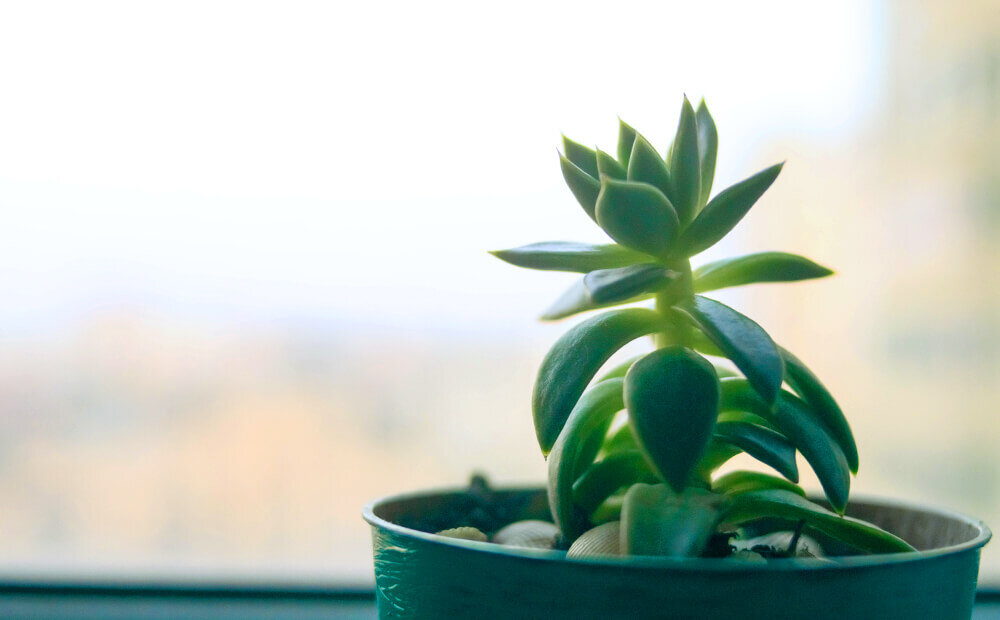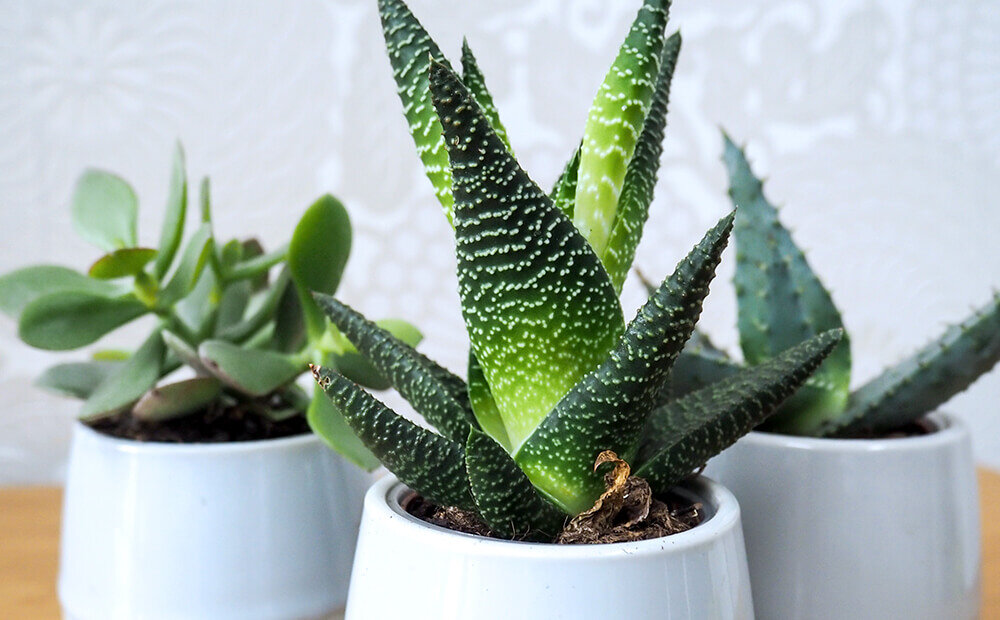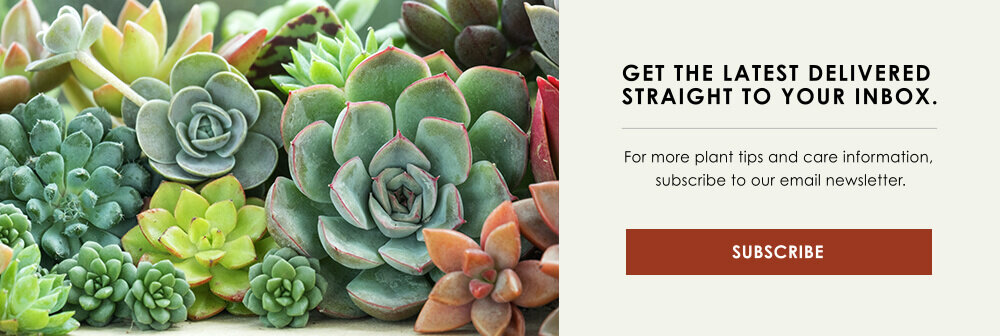7 TIPS FOR CARING FOR SUCCULENTS IN WINTER
There are so many amazing succulents that can be grown as houseplants. They are such a unique family of plants, with so much color, shape, and style variation. Succulents are popular, not just because of their good looks but also because they’re generally pretty tough and can survive a surprisingly long time without water. They’re usually pretty good houseplants for super busy people or those who are away from home a lot.
While they are generally low-maintenance and funky looking plants, they do need a little care. And winter can be a challenging time for them, just like it is for all of our plants and us. We could all use a little more light.
Succulents will reach for the sun in winter when it’s weaker. If they don’t have enough light, they may start to get tall, lanky and weak, learning towards the nearest window.
Here are 7 tips for caring for your succulents through an Indianapolis winter.
1. LET THEM DRY FULLY BETWEEN WATERINGS.
Succulents really dislike soggy soil. They need good drainage, and they like a deep soak when they are watered, but they don’t want that water to hang around too long. Use soil designed for cacti or succulents, and make sure they have a pot with drainage; terra cotta is great for succulents. While they can go quite a while without water, you still need to pay attention and regularly check the soil to see if it’s fully dry. Succulents that are near heating vents may dry out much faster than those in other locations.
2. SUCCULENTS NEED LOTS OF SUNLIGHT.
Indoors, succulents should get at least 8 hours of bright light per day. The best place for them is right near a sunny south-facing window. If you don’t have a south-facing window, you can supplement with a grow light to keep them happy through the winter. The grow light should be relatively close to the succulents, around 3 to 4 inches above them, and should be on for about 8 to 10 hours per day.
3. KEEP TURNING THEM TO PREVENT THEM FROM TIPPING OVER.
Succulents will reach for the sun during the winter when there are fewer sunlight hours. If they don’t receive enough light, they may start to get tall, lanky, and weak, learning towards the nearest window. If you rotate them a ¼ turn (choose clockwise or counterclockwise and stick with it) every time you water, or once a week, it should help keep them growing straight up.
4. DON’T FERTILIZE SUCCULENTS IN WINTER.
Succulents don’t generally need much fertilizer ever, but they really don’t need it at all in the winter when they’re barely growing.
5. BE PREPARED FOR THEM TO LOSE SOME LEAVES.
A few leaves coming off your succulent, or any other houseplant, doesn’t necessarily mean it’s dying. Like other plants, succulents eventually shed old leaves. If a couple of leaves around the outside edges or the plant's bottom are getting dry and crispy and shriveling up, don’t panic. It’s ok. There’s no need to worry unless all the leaves, especially center ones, start to look mushy or black. If this happens, your plant has most likely been overwatered. Get it out of wet soil, and repot in fresh dry soil; you may be able to save it.
6. KEEP A CLOSE WATCH FOR MEALYBUGS.
These rude little plant pests are particularly common on plants with thick juicy, succulent leaves. They look like tiny small fuzzy spots of cotton wool. Use a Q-tip dipped in rubbing alcohol to get them off, quarantine your plant, and inspect and treat it every few days for several weeks.
7. DON’T WORRY TOO MUCH ABOUT THE TEMPERATURE.
Most succulents like to be hot in the summer, but they prefer cooler temperatures, between 50-65°, in winter.
Do you have a collection of succulents yet? They’re a fun way to add some unique style, color, and shapes to your home decor. Stop by the garden center and check out our selection.






